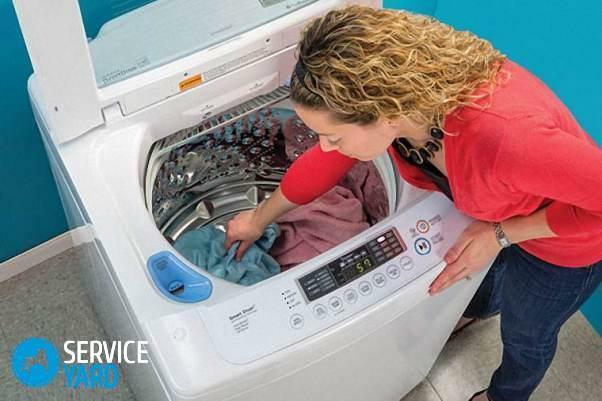We are all accustomed to in recent years to insulate their homes. The main activities in this direction are associated with the installation of thermal insulation materials in the wall panels. Presence of the insulation layer significantly reduces the heat transfer rate between the walls and the outside air. It save the heat inside the living quarters is the key to a comfortable stay, even if a strong heating equipment.

Warming - a task that concerns not only the structural elements of a house. When using water as the floor you can not do without insulation. What is the insulation in this case, and what are its functions, we shall understand in more detail.
The main task that performs a thermal protection in underfloor heating
Home heating systems, for which we rely, are designed to provide us with an effective heating. In houses where the radiators, heat is supplied inside the heated space by the contact surface of the heating device with the air mass. As a result, heat transfer to 60% of the heat is used for heating the interior space as a result of air convection. Radiant Floor Heating in this respect is much more efficient. By heating the floor surface the heat is evenly distributed within the premises, creating favorable conditions for the dwelling.
To achieve high efficiency of the underfloor heating system can be achieved by proper installation and laying of all design elements. Not least in this respect plays insulation for your underfloor heating, water action principle. Misfolded insulating layer, or lack of it, will lead to the fact that your heating system will operate at 50% idle. Heat from the heating circuit should go up instead of down, heating the concrete floor or wooden structure of a dial.
On a note: experts say a warm water floor without insulation results in significant heat loss in winter. Up to 50% of the thermal energy consumed for heating in the basement ceiling. Absence of heater to warm floors in floor decks causes insufficiently comfortable temperature in a heated room.

To avoid such troubles, and receive from the heating system the maximum possible Efficiency, you will need a heater, on top of which is already done then blow water loops circuit. Thermal insulation may be performed with different materials, each of which has its own characteristics and processing parameters. Familiar to us all foam, extruded polystyrene and mineral wool permit due to its low thermal conductivity necessary to create a heat insulating layer. Laying insulation is made depending on the type of floor covering and mounting the selected circuit water pipe floor. From the choice of material depends on its processing characteristics a method of laying water circuits and further operation of the entire heating system.
The following example will illustrate this point:
Previously used foam has a density of 20-22 kg / m3But in accordance with stacking technology warm water floors insulating material density shall be at least 35 kg / m3 for ceiling and 50 kg / m3 equipment for flooring on the ground floor. The presence of such constraints to insulation materials caused by technological factors which caused most principle of heating floors.
Water is a low-temperature floor heating system. Sex in a heated room should not be heated above 300FROM. Exceeding these parameters will create discomfort indoors. A negative high floor heating temperature affect the design characteristics of the flooring, and heating devices will work with the increased load. The presence of the heat insulating layer necessary thickness will eliminate heat loss when the water circuits creates optimal conditions for the propagation of heat in the desired direction. A smaller insulation thickness will lead to that heat will go underground. Greater thickness of the insulating material would be a serious obstacle to heat the floor and the floor covering. In this case, essentially Buda disrupted warm water floors.
On what is the choice of insulating material
The basis for underfloor heating is the so-called "layer cake" - type-setting structure in which each layer performs its specific functions and tasks. Warming in this cake is one of the leading places, so much depends on the quality of the insulation material, its composition and structure. Thermal insulation must meet any changes in operating conditions, the heating of communication. Safety insulating material is a major factor in determining his choice.

The second most important process parameter is the thermal conductivity of the thermal insulation materials. Here there is a close relationship material thickness and thermal conductivity. At the proposed figure - chart shows the settings of various building materials used in the home environment.

The advantage of synthetic insulating material and the mineral wool lies in the fact that at a small thickness, they have good thermal conductivity. When it comes to installation of underfloor heating in the floor decks or in wooden buildings, narrow width of thermal insulation materials and their low weight play a decisive role.
Therefore, on the basis of the data easy to draw the following conclusion. Thermal insulation for warm water floor is created from materials that have the following characteristics:
- Low thermal conductivity;
- fire resistance;
- moisture resistance;
- soundproofing;
- technological compatibility with other materials.
The insulation thickness is determined by the texture and structure of the material. Its purchasing decisions guided by insulating materials listed parameters. Price in this case does not play a special role. Today, all the materials offered in the retail network, have approximately the same value. In the general context of expenditure on equipment underfloor heating, the price of the thermal insulation is not critical.
What should be the thickness of insulation?
In the distribution network it offers a certain standard material thickness. What is needed thickness of insulation in your case, it is determined by the terms of the project of the heating system. Laid layer of insulation in the case of extruded polystyrene on the first floor to be at least 100-115 mm. In the absence of desired thickness Styrofoam, insulation packing made in two layers (50 + 50 mm).
For laying floors water on the concrete slab of the second floor, you would need a much lower heat insulation layer thickness of 25-35 mm. About foam density we have said previously. Optimal density for thermal insulation foam should be 38-45 kg / m3.

Features of the practical use of different insulation materials
Expanded polystyrene
To begin with, the insulation is laid in the bottom layer cake, directly on the rough surface. Before insulation layer laid on the subfloor trail waterproofing and only then begin laying the heat insulating layer. Let us consider separately, as the work is done with the most common and popular materials.
Let's start with Styrofoam. The material is produced in the form of sheets or slabs. This form is very convenient for installation. Polystyrene thickness may vary. The thickness of the sheets varies from 30 and up to 120 mm. For the installation work of all categories, especially in the case of under-floor heating, using a variety of expanded polystyrene - penoplex (extruded polystyrene).

Polystyrene foam has an extremely low thermal conductivity, is very convenient and practical in the process of laying. However, this material has a significant disadvantage, lack of firmness.
Important! Do not forget that penoplex brittle and fragile material, but to give strength and rigidity of the entire floor structure, followed by water, you need a concrete screed or stable grazing system.
In order to eliminate this drawback when forming a cake is used for reinforcing concrete screed or additional flooring is made of plywood sheets or gypsum fiber slabs.

An easier way out of this situation, the use of low-cost analog - conventional foam.
For optimum thickness of the foam heat insulating layer is not less than 100 mm. With underfloor equipment on ceilings, sufficient thickness of the foam will be 25-30% less.
We use mineral mats
To get the necessary rigidity for the layer cake often pay attention to mineral mats. They are based on using familiar mineral wool, but thanks to technology, the material was rigid structure. Using mineral mats can easily fill the existing void in the subfield, to fill all the cells puff pie chart with the rack set. Despite the obvious advantages compared to polystyrene, the material is unstable to moisture.
On a note: damaged layer vapor and waterproofing can lead to the fact that the mats absorb an available moisture and lose their insulation properties. The aqueous floor can be laid on mineral mats made on the basis of basalt or made of fiberglass.
Other, less common insulating materials include cork material. Cork insulation has low thermal conductivity, but poorly resistant to moisture. Often in floors having such insulation fungal formation. For best performance and should be used cork, treated with wax. Price in this case grows, and on the technological characteristics of the cork inferior foam and polystyrene foam.
New material, which is now increasingly used in domestic construction for the installation of water sexes are specialized mats. Unlike other materials, the mats are universal. These designs are directly vapor barrier and has a lug, special protrusions that facilitate mounting and laying of the heating circuit.
In the profiled mats are practical and comfortable. Using them in the process of laying the floor heating can be laid on any water circuit diagram quickly and without additional fasteners.

conclusion
Status rough surface of the floor, the way the equipment of warm water floor determines the type and kind of insulation. When working with a concrete screed normally used polystyrene, mireralnye profiled mats or mats. Concrete floor provides enough reliable fixation of the insulation material. In the case of grazing systems at work, you can use mineral mats and foam.

Method fixation of the material by means of adhesive or adhesive tape construction. For the strength of the foam sheets are treated with sealant. It is important to remember to put after the layer of insulating material reinforced mesh or sheet, for giving the whole structure the required strength.



